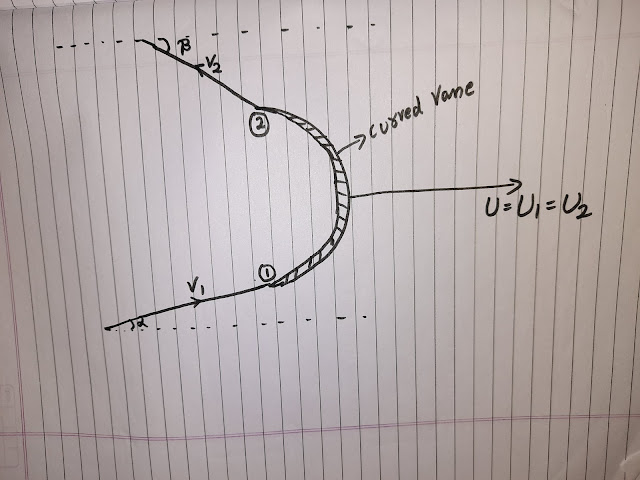Lecture - 7 ( jet strikes on moving curved plates )

Let's continue after lecture 6 Jet strikes at the tip of moving vane We are using all our same previous notations, the only difference is that in this case curved plate is there and jet is striking at the tip of this moving curved vane. V1 is the velocity of water jet with respect to ground entering at the tip of moving curved vane making angle α with horizontal axis. Water jet enter vane at entry point 1 and get deflected by δ angle and exit as velocity V2 m/sec making angle 'β' with horizontal axis. This curved vane is moving with velocity 'U' as shown in below figure. Now first of all let me draw a parallel vector U1 on entry and U2 at exit. After that as we know V1 is the water Jet velocity entering on vane with respect to ground and vane is moving with velocity U1, so the relative velocity of water Vr1 (velocity with respect to blade) will never enter the vane with angle α. Entering angle of both the velocity vector V1 and Vr1 is not same, so they ...




